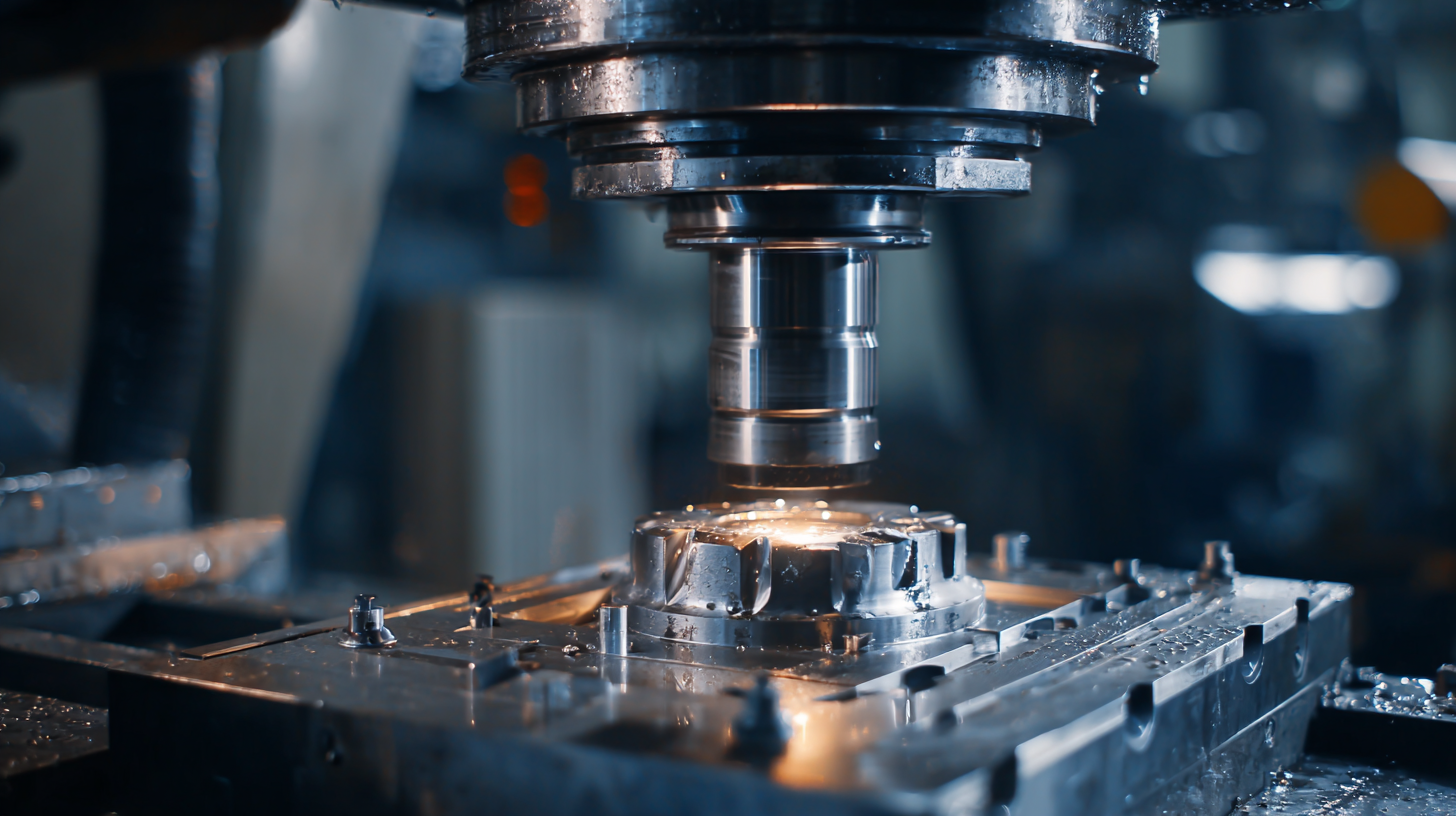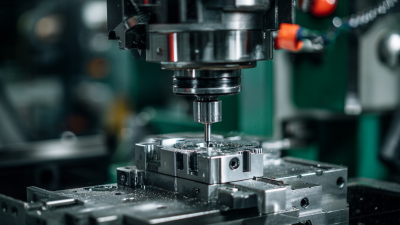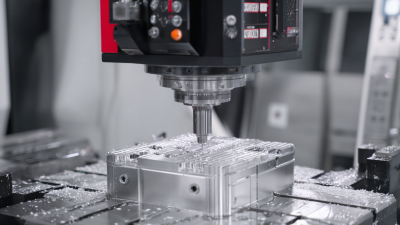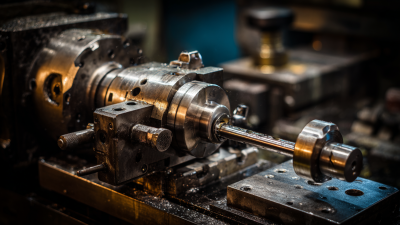Exploring the Future of Industrial Milling Machines: Trends and Innovations Shaping Manufacturing in 2023
As we venture into 2023, the landscape of manufacturing continues to evolve at a rapid pace, driven by advancements in technology and changing market demands. One area experiencing significant transformation is the domain of Industrial Milling Machines, which play a pivotal role in the processing of materials across various industries. These sophisticated machines are not only critical for precision engineering but are also being optimized to enhance productivity and efficiency in manufacturing processes.
This exploration of the future of Industrial Milling Machines will delve into the latest trends and innovations reshaping the sector. From the integration of smart technology and automation to the development of more versatile and eco-friendly machines, the industry is witnessing a shift that promises to redefine traditional manufacturing practices. As we scrutinize these developments, we will uncover how these trends are not just about improving efficiency, but also about addressing sustainability and adaptability in a rapidly changing industrial environment.
In this discourse, we aim to highlight the critical advancements shaping the future of Industrial Milling Machines and their broader implications for the manufacturing landscape. Understanding these trends will be essential for manufacturers looking to stay competitive and responsive to the demands of an increasingly dynamic market.

The Evolution of Industrial Milling Machines: Key Milestones and Innovations
The evolution of industrial milling machines has been marked by several key milestones that have transformed manufacturing processes. From the introduction of computer numerical control (CNC) technology to the integration of advanced materials, these innovations have significantly enhanced precision, efficiency, and versatility in machining operations. The shift towards automation has allowed for the optimization of workflows, reducing human error and increasing production rates. As manufacturers adopt these advancements, they are not only improving productivity but also adapting to the demands of a more competitive global market.
In 2023, the trend of embracing the circular economy is becoming increasingly prevalent in the manufacturing sector, influencing the design and operation of milling machines. Companies are focusing on sustainability by implementing practices that minimize waste and promote recycling of materials. Alongside this, digitalization plays a vital role in tracking resource use and improving machine performance. The incorporation of artificial intelligence is further revolutionizing decision-making processes, allowing for predictive maintenance and better resource allocation. These innovations not only spotlight the evolution of industrial milling machines but also pave the way for a more sustainable and efficient manufacturing future.
Emerging Technologies in Milling: Automation and Smart Manufacturing Solutions
The landscape of industrial milling is rapidly evolving, driven by advancements in automation and smart manufacturing solutions. As manufacturers increasingly adopt the principles of the circular economy, technologies such as artificial intelligence and modularisation are playing vital roles. These innovations enable processes that minimize waste and enhance efficiency, ensuring that production methods are both sustainable and cost-effective.

At upcoming industry events, companies are set to unveil cutting-edge automation technologies that promise to revolutionize manufacturing operations. For instance, innovations in clamping technology and the introduction of smart cells are designed to optimize the versatility of milling machines. The integration of closed-loop process control systems is also poised to improve precision and reduce cycle times, underscoring a trend towards greater interconnectedness in manufacturing workflows. As these technologies continue to develop, they hold the potential to redefine how milling machines operate, further integrating them into smart factory environments.
Sustainability Trends in Milling Machines: Eco-Friendly Practices and Materials
The milling machine industry is experiencing a significant shift towards sustainability, driving manufacturers to adopt eco-friendly practices and materials. In 2023, companies are increasingly focusing on energy-efficient designs and technologies that minimize waste during operations. By integrating advanced automation and smart controls, manufacturers can optimize energy consumption and reduce their carbon footprint while maintaining high productivity levels.
Moreover, the choice of materials used in milling machines is also evolving. Manufacturers are seeking sustainable alternatives to traditional materials, such as recycled metals and bio-based composites, which not only reduce environmental impact but also enhance durability and performance of the machines. Additionally, a growing emphasis on circular economy principles encourages companies to implement recycling and refurbishment programs, ensuring that components are reused and minimizing the need for new raw materials.
This holistic approach to sustainability is reshaping the future of industrial milling machines and positioning the industry as a leader in environmentally responsible manufacturing.
The Role of CNC Technology in Shaping Modern Milling Processes
The integration of CNC technology in modern milling processes is revolutionizing the manufacturing landscape, defining a trend towards increased efficiency and precision. As industries adopt advanced digital manufacturing technologies, CNC machining stands out as a critical component, streamlining operations and enhancing productivity. The ability to program intricate designs with exact specifications allows manufacturers to produce complex parts swiftly, which is particularly vital in sectors like medical device manufacturing where safety and precision are paramount.

Looking ahead, the convergence of artificial intelligence with CNC machining is set to further reshape the industry. AI-driven algorithms can analyze vast amounts of data to optimize toolpaths and predict potential machining issues before they arise. This proactive approach not only minimizes downtime but also enhances the overall quality of the machined parts. Innovations such as data model-based toolpath generation techniques demonstrate the ongoing evolution of milling machines, ensuring that manufacturers can meet the growing demands of precision and efficiency in a rapidly changing market.
Future Market Projections: Demand and Opportunities for Milling Equipment in 2023
The market for carbonyl iron powder and ultrafine iron powder is poised for modest growth, with a projected value of $187.16 million in 2023. This value is expected to increase to $187.9 million by 2024 and reach approximately $194 million by 2032, reflecting a compound annual growth rate (CAGR) of 0.40% during the period from 2024 to 2032. Such steady market expansion highlights the ongoing demand for high-quality iron powders used across various industrial applications, particularly in manufacturing processes that require precise material properties.
In contrast, the synthetic diamond industry in China is experiencing rapid growth, with production exceeding 23 billion carats in 2023. This surge is largely driven by companies in regions such as Henan, utilizing advanced production technologies like High-Pressure High-Temperature (HPHT) and Chemical Vapor Deposition (CVD). The complete supply chain caters to both jewelry and industrial sectors, indicating a robust market landscape that is expected to further innovate as technology progresses and applications expand. This growth presents significant opportunities for manufacturers and investors in the milling equipment sector, as they align with evolving industry needs and technological advancements.
Related Posts
-

2025 Trends: Unlocking the Secrets of the Best Industrial Milling Machines for Maximum Efficiency
-

How to Choose the Best Industrial Milling Machine for Your Business Needs
-

The Future of Advanced Milling Machine Technologies
-

7 Best Tips for Choosing the Right Milling Machine Machine for Your Business
-

How to Choose the Right Milling Machine for Your Business Needs
-

How to Optimize Your Production Efficiency with Industrial Packing Machines
